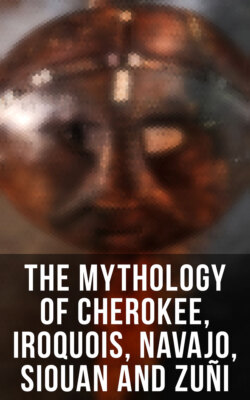Читать книгу The Mythology of Cherokee, Iroquois, Navajo, Siouan and Zuñi - James Mooney - Страница 30
На сайте Литреса книга снята с продажи.
Who were the Mound-Builders?
ОглавлениеIt is not probable that the reader will agree with all the conclusions drawn in the paragraph quoted above, which would claim for these structures a hieroglyphic as well as a sepulchral significance. But such speculations cannot destroy the inherent interest of the subject, however much they may irritate those who desire to arrive at logical conclusions concerning it. Who then were the folk who raised the mounds of Ohio and the Mississippi and spread their culture from the Gulf states region to the Great Lakes? Needless to say, the 'antiquaries' of the last century stoutly maintained that they were strangers from over the sea, sun- and serpent-worshippers who had forsaken the cities of Egypt, Persia, and Phoenicia, and had settled in the West in order to pursue their strange religions undisturbed. But such a view by no means commends itself to modern science, which sees in the architects of these mounds and pyramids the ancestors of the present aborigines of North America. Many of the objects discovered in the mounds are of European manufacture, or prove contact with Europeans, which shows that the structures containing them are of comparatively modern origin. The articles discovered and the character of the various monuments indicate a culture stage similar to that noted among the more advanced tribes inhabiting the regions where the mounds occur at the period of the advent of the whites. Moreover, the statements of early writers on these regions, such as the members of De Soto's expedition, prove beyond question that some of the structures were erected by the Indians in post-Columbian times. "It is known that some of the tribes inhabiting the Gulf states, when De Soto passed through their territory in 1540-41, as the Yuchi, Creeks, Chickasaw, and Natchez, were still using and probably constructing mounds, and that the Quapaw of Arkansas were also using them. There is also documentary evidence that the 'Texas' tribe still used mounds at the end of the seventeenth century, when a chief's house is described as being built on one. There is also sufficient evidence to justify the conclusion that the Cherokee and Shawnee were mound-builders.... According to Miss Fletcher, the Winnebago build miniature mounds in the lodge during certain ceremonies."7
Nothing has been found in the mounds to indicate great antiquity, and the present tendency among archæologists is to assign to them a comparatively recent origin.
